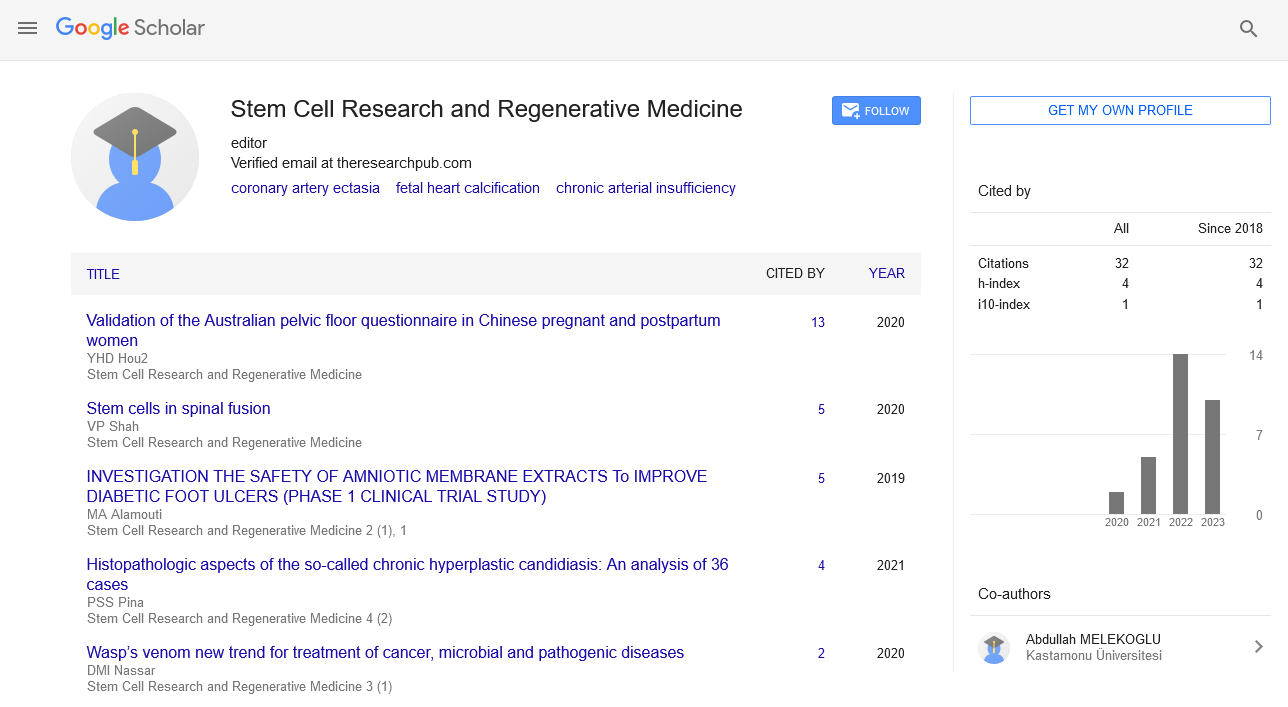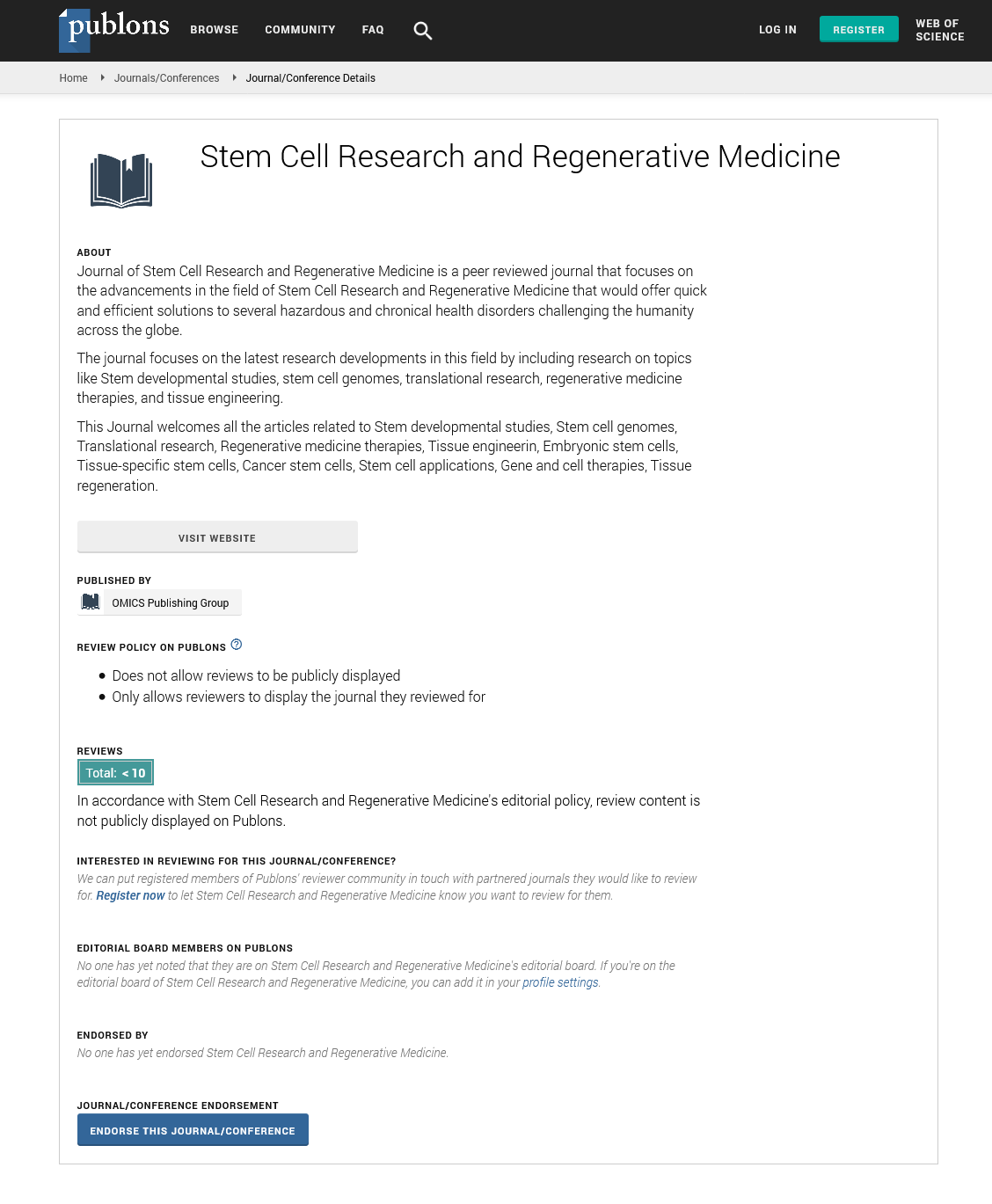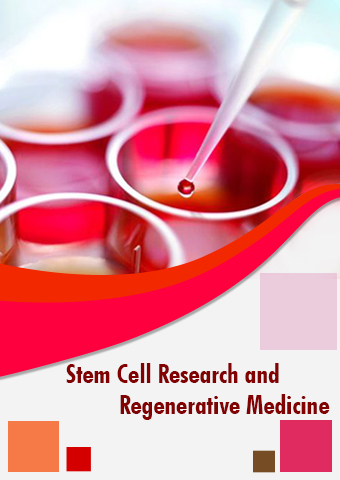Perspective - Stem Cell Research and Regenerative Medicine (2024) Volume 7, Issue 5
Addressing the High Costs of Stem Cell Therapies
- Corresponding Author:
- Diaz Yael
Department of Biotechnology,
Metropolitan Technological University,
Las Palmeras 3360,
Chile
E-mail: ydiaz@gmail.com
Received: 01-Oct-2024, Manuscript No. SRRM-24-149851; Editor assigned: 03-Oct-2024, Pre QC No. SRRM-24-149851 (PQ); Reviewed: 17-Oct-2024, QC No. SRRM-24- 149851; Revised: 24-Oct-2024, Manuscript No. SRRM-24-149851 (R); Published: 31-Oct-2024, DOI: 10.37532/SRRM.2024.7(5).255-256
Introduction
Stem cell therapies represent one of the most promising innovations in modern medicine, offering potential treatments for a wide range of conditions, from degenerative diseases to traumatic injuries. However, despite their medical promise, the high cost of stem cell therapies remains a major barrier to widespread accessibility. While these therapies hold the potential to revolutionize healthcare, their prohibitive costs limit their availability to a small percentage of the population. Addressing these costs is critical to ensuring equitable access to stem cell treatments and unlocking their full therapeutic potential.
Description
Factors contributing to the high costs of stem cell therapies
The high price of stem cell therapies can be attributed to several key factors, ranging from the complexity of the technology to regulatory and manufacturing challenges.
Research and development costs
Stem cell therapies are the result of years of intensive Research and Development (R and D). The costs of developing new treatments, conducting preclinical and clinical trials, and ensuring regulatory compliance are substantial. These costs are typically passed on to patients in the form of high treatment prices. Furthermore, because many stem cell therapies are still in the experimental or early clinical stages, the return on investment for companies developing these treatments is uncertain, which can lead to even higher prices.
Manufacturing and quality control
Manufacturing stem cell-based therapies is a complex and highly regulated process. Cultivating stem cells in a lab requires strict quality control measures to ensure that the cells are safe, viable, and free from contamination. Producing stem cells that meet the required clinical-grade standards involves significant labor, specialized equipment, and on-going testing. The process of scaling up production to meet patient demand is another challenge that drives up costs, particularly for autologous treatments, which are customized to individual patients.
Regulatory hurdles and compliance
Stem cell therapies must undergo extensive regulatory scrutiny before they can be approved for use. In many countries, regulatory agencies like the U.S. Food and Drug Administration (FDA) require multiple phases of clinical trials to demonstrate the safety and efficacy of stem cell treatments. These trials are expensive, time-consuming, and often involve complex testing procedures, further adding to the overall cost. Additionally, even after approval, companies must continue to invest in monitoring, compliance, and reporting to maintain regulatory approval, all of which contribute to high prices.
Personalized and tailored treatments
One of the most attractive aspects of stem cell therapies is the ability to develop personalized treatments using a patient’s own cells (autologous stem cells). However, this personalized approach comes at a cost. Autologous therapies require collecting, processing, and reinfusing the patient’s own cells, which is a labor-intensive process. Because these therapies are highly individualized, it is difficult to achieve economies of scale, meaning each treatment is inherently more expensive than mass-produced drugs or treatments.
Strategies to lower the costs of stem cell therapies
While the high costs of stem cell therapies are a challenge, there are several strategies that can be implemented to make these treatments more affordable and accessible.
Advances in automation and manufacturing
One of the most promising ways to reduce the cost of stem cell therapies is through advancements in automation and manufacturing technologies. By automating key steps in the production process, such as cell culture and quality control, manufacturers can reduce labor costs and improve efficiency. Additionally, improvements in bio-manufacturing processes, such as 3D bio-printing and large-scale bioreactors, could make it possible to produce stem cells in greater quantities at lower costs.
Regulatory streamlining and harmonization
Regulatory approval is a major cost driver for stem cell therapies, but streamlining the approval process could help lower costs. Encouraging collaboration between regulatory agencies and researchers, as well as adopting international standards, could reduce duplication of effort and speed up the approval process. Some countries have already introduced “fast track” or “conditional approval” programs for regenerative medicines, allowing certain therapies to be used earlier under strict conditions while further data is collected.
Innovative payment models
To make stem cell therapies more affordable, new payment models could be explored. One option is outcome-based pricing, where the cost of the therapy is tied to its effectiveness. If the treatment delivers the promised results, then the full price is paid; if not, the cost is reduced or refunded. Another model involves spreading the cost of the therapy over time, with payments made in installments rather than upfront. These payment models could help reduce the financial burden on patients and make high-cost therapies more accessible.
Public funding and subsidies
Governments can play a key role in reducing the costs of stem cell therapies through public funding and subsidies. Increased investment in stem cell research and clinical trials could help offset some of the R and D costs, lowering the price of the final product. In addition, providing subsidies or insurance coverage for stem cell treatments could make them more affordable for patients, particularly for life-saving or critical therapies.
Collaboration and shared infrastructure
Encouraging collaboration between research institutions, biotech companies, and healthcare providers could help reduce costs by sharing infrastructure and resources. By pooling resources and expertise, organizations can reduce duplication of effort; accelerate development timelines, and lower overall costs. Creating shared bio-banking facilities, for example, could help standardize stem cell production and make it more cost-effective.
Conclusion
The high costs of stem cell therapies present a significant barrier to widespread adoption, limiting access to potentially life-changing treatments for many patients. However, there are several strategies that could help address these costs, from advancements in manufacturing technology and regulatory reform to innovative payment models and public investment.
As the field of regenerative medicine continues to evolve, finding ways to reduce the cost of stem cell therapies will be essential to ensuring that these promising treatments are accessible to all who need them. While the path forward will require collaboration across the healthcare ecosystem, the potential benefits of making stem cell therapies more affordable are immense. By addressing these cost barriers, we can unlock the full potential of stem cell therapies and bring their life-changing benefits to a broader population.


